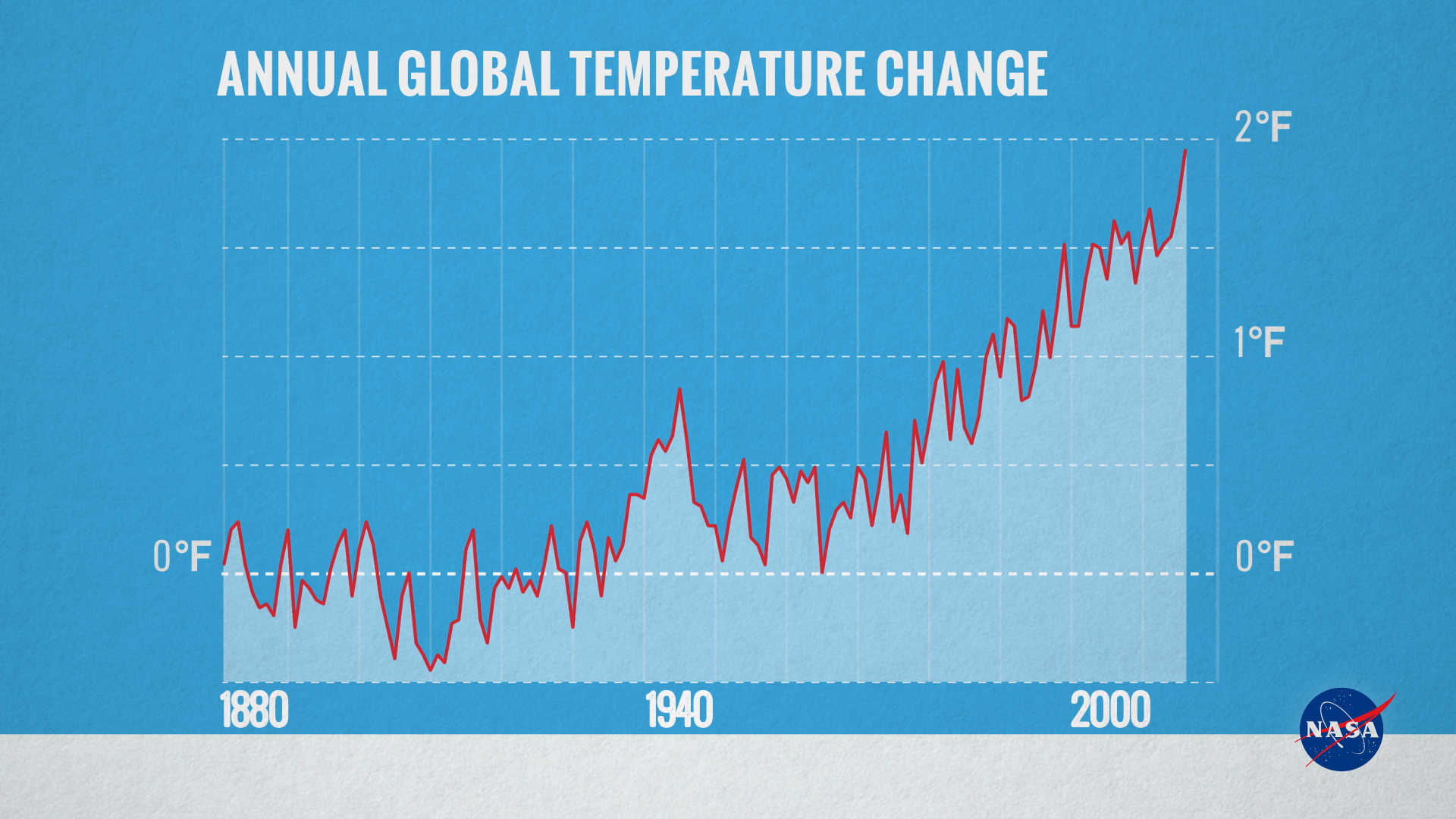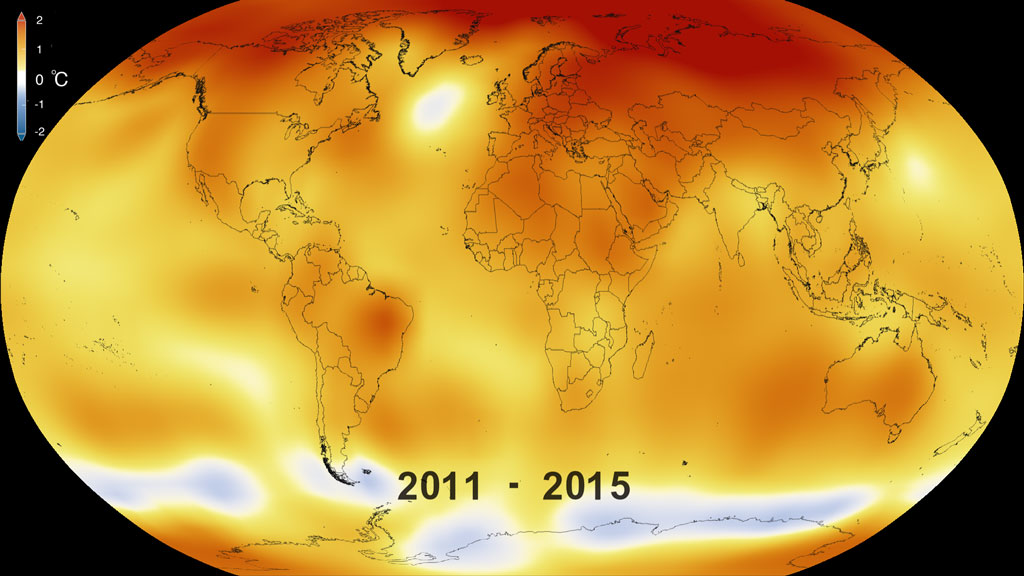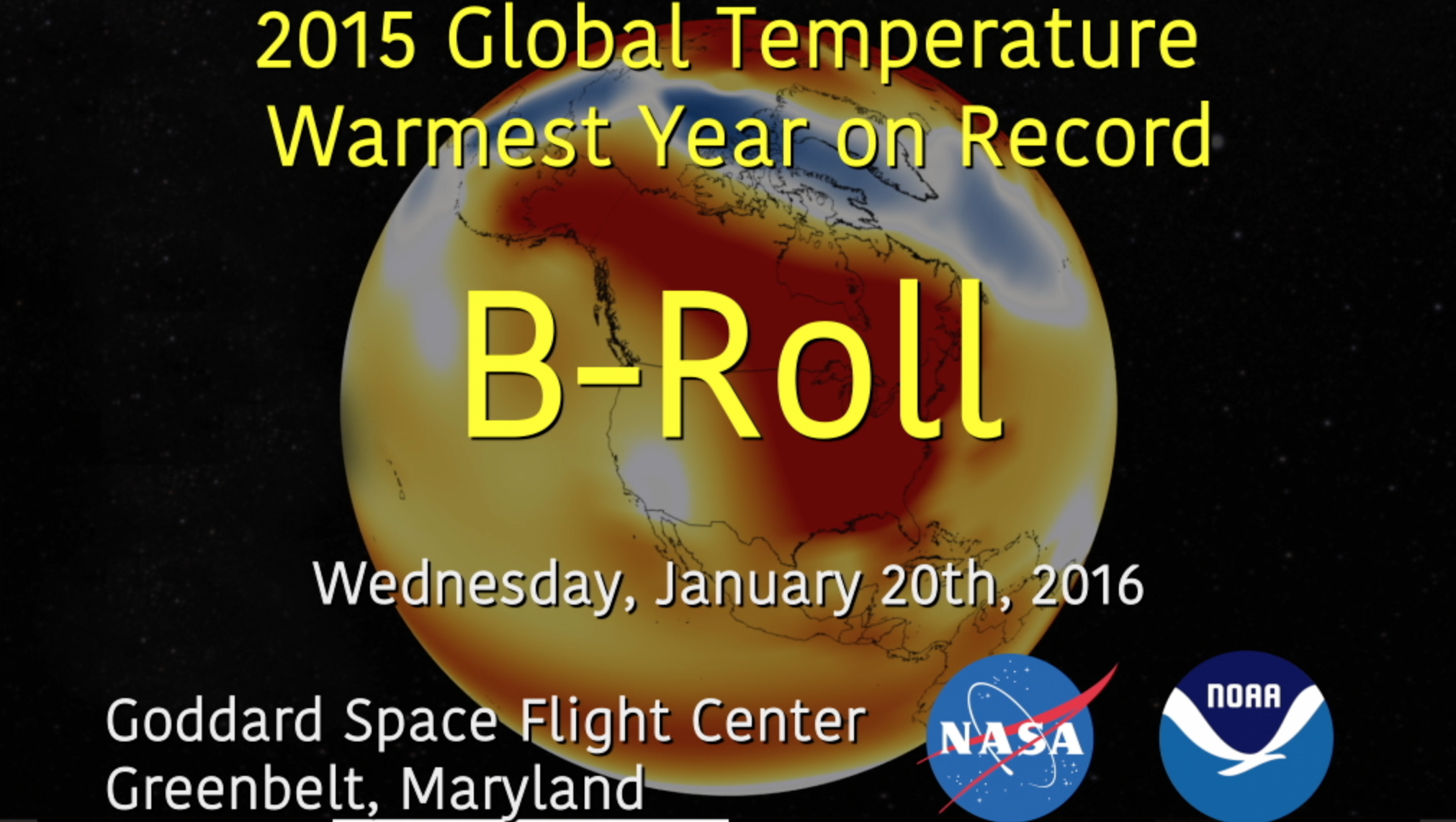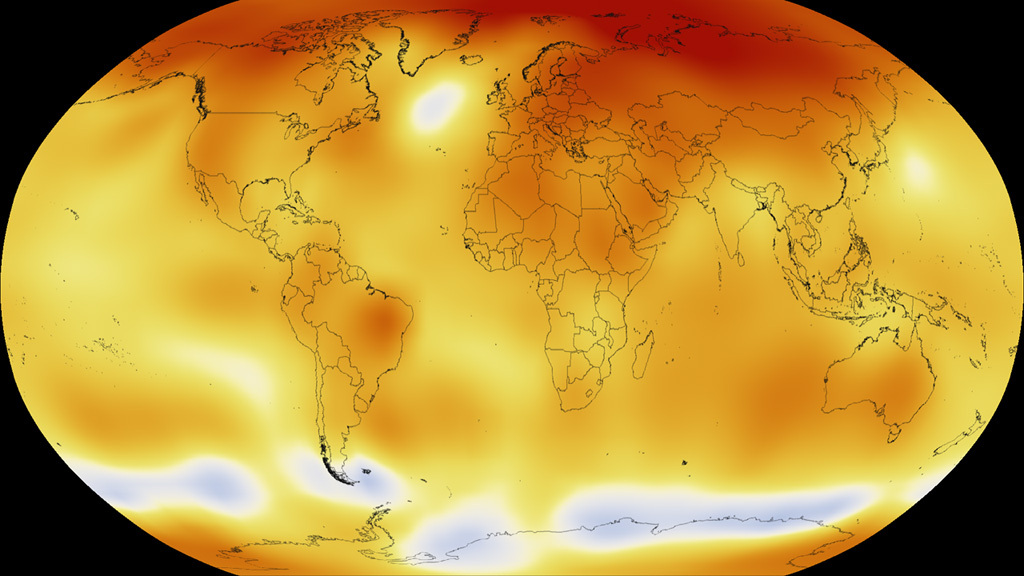Global Temperature Anomalies from December 2015
Global temperature data for December 2015, in degrees Fahrenheit, starting with North America and pulling back to reveal the whole world. The December 2015 temperatures are compared to a baseline of the 1951-1980 average temperature. Higher than normal temperatures are shown in red and lower then normal termperatures are shown in blue.
Earth’s 2015 surface temperatures were the warmest since modern record keeping began in 1880, according to independent analyses by NASA and the National Oceanic and Atmospheric Administration (NOAA). Globally-averaged temperatures in 2015 shattered the previous mark set in 2014 by 0.23 degrees Fahrenheit (0.13 Celsius).
Weather dynamics often affect regional temperatures, so not every region on Earth experienced record average temperatures last year. This data visualization of NASA's Goddard Institute for Space Studies (GISS) Global temperature anomalies for December of 2015 show the United States and then zooms out to show the global picture. Temperature anomalies indicate how much warmer or colder it is than normal for a particular place and time.
Global temperature data for December 2015, in degrees Celsius, on a spinning globe. Higher than normal temperatures are shown in red and lower then normal termperatures are shown in blue.
Global temperature data for December 2015, in degrees Fahrenheit, on a spinning globe. Higher than normal temperatures are shown in red and lower then normal termperatures are shown in blue.
Monthly Progresion - Global temperature anomaly monthly data are shown in degrees Fahrenheit in Robinson projection. Higher than normal temperatures are shown in red and lower then normal temperatures are shown in blue.

This frame set has the 2015 monthly temperature progression like the above frameset without the date and colorbar overlay.

Date overlay for the 2015 monthly progression
Credits
Please give credit for this item to:
NASA/Goddard Space Flight Center Scientific Visualization Studio
Data provided by Robert B. Schmunk (NASA/GSFC GISS)
-
Scientists
-
Gavin A. Schmidt
(NASA/GSFC GISS)
-
Robert B Schmunk
(SIGMA Space Partners, LLC.)
-
Reto A. Ruedy
(SIGMA Space Partners, LLC.)
-
Gavin A. Schmidt
(NASA/GSFC GISS)
-
Producers
- Michelle Handleman (USRA)
- Joy Ng (USRA)
-
Writer
- Patrick Lynch (Wyle Information Systems)
-
Data visualizer
- Lori Perkins (NASA/GSFC)
Series
This page can be found in the following series:Datasets used
-
GISTEMP [GISS Surface Temperature Analysis (GISTEMP)]
ID: 585The GISS Surface Temperature Analysis version 4 (GISTEMP v4) is an estimate of global surface temperature change. Graphs and tables are updated around the middle of every month using current data files from NOAA GHCN v4 (meteorological stations) and ERSST v5 (ocean areas), combined as described in our publications Hansen et al. (2010), Lenssen et al. (2019), and Lenssen et al. (2024).
Credit: Lenssen, N., G.A. Schmidt, M. Hendrickson, P. Jacobs, M. Menne, and R. Ruedy, 2024: A GISTEMPv4 observational uncertainty ensemble. J. Geophys. Res. Atmos., 129, no. 17, e2023JD040179, doi:10.1029/2023JD040179.
This dataset can be found at: https://data.giss.nasa.gov/gistemp/
See all pages that use this dataset
Note: While we identify the data sets used on this page, we do not store any further details, nor the data sets themselves on our site.
Release date
This page was originally published on Wednesday, January 20, 2016.
This page was last updated on Sunday, January 5, 2025 at 10:59 PM EST.




